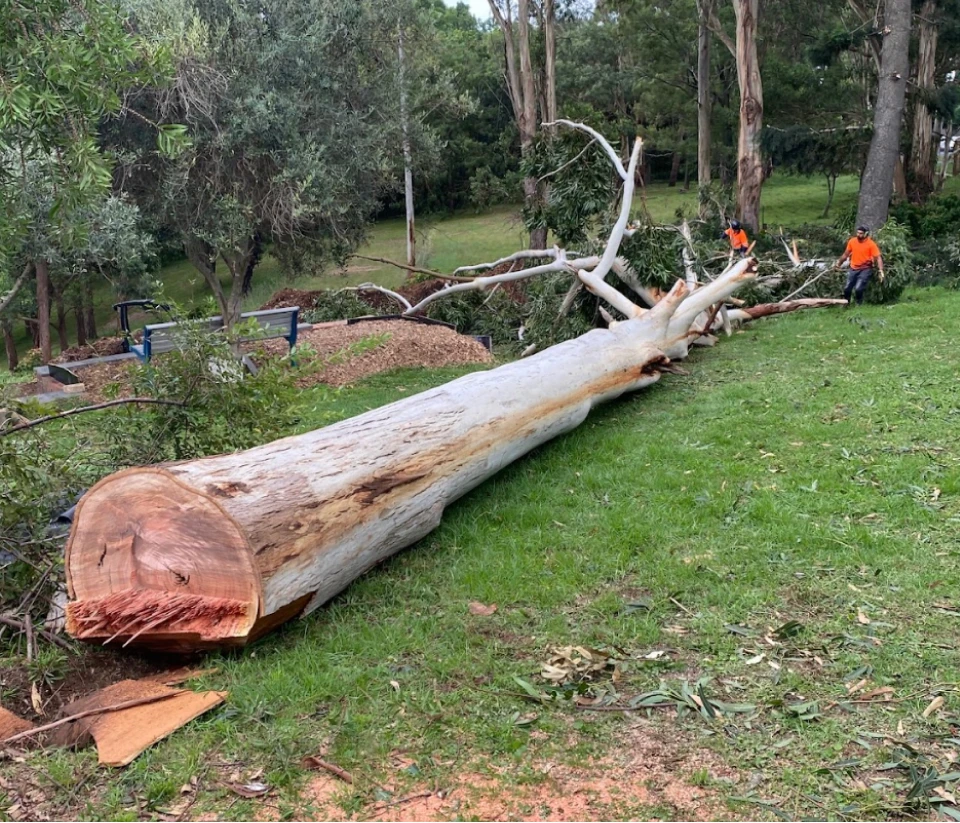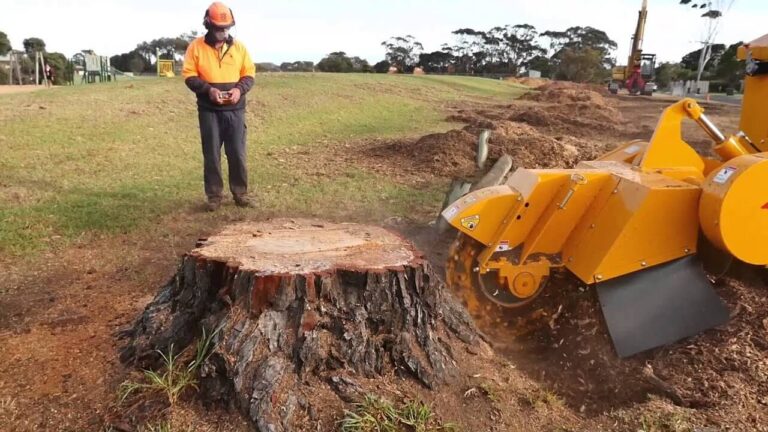Stump removals in Sydney are more than just getting rid of tree debris—they’re an essential part of the city’s ecological maintenance cycle. When trees are cut down or fall on their own, the stumps and root systems left behind can attract pests, spread diseases, and upset the fragile balance of urban forestry ecosystems that Sydney relies on for clean air, diverse wildlife, and climate stability.
By including stump removals Sydney services in larger environmental plans, we can ensure that tree removal goes beyond just chopping off the trunk. It also involves completely removing the roots to avoid regrowth problems and making room for new plantings that benefit native species and restore habitats.
Sydney’s urban forest is facing increasing pressures from:
- Rapid urban development shrinking green spaces
- Climate changes impacting tree health
- Invasive species posing a threat to native plants
- Old infrastructure clashing with tree root systems
To tackle these issues, we need a comprehensive strategy where stump removal works hand in hand with water conservation, waste management, and sustainable landscaping efforts to strengthen the city’s ability to withstand environmental challenges.

What Are the Common Methods Used for Stump Removal in Sydney?
Stump grinding Sydney services rely on two primary techniques: grinding and complete extraction. Grinding involves using specialized machinery to mechanically shred the stump into wood chips, breaking it down below ground level whilst leaving the root system to naturally decompose. Extraction, by contrast, removes the entire stump and root ball from the soil.
Modern Techniques for Stump Removal
Modern stump extraction techniques employ hydraulic stump grinders equipped with rotating cutting discs featuring carbide teeth. These machines systematically reduce stumps to mulch, penetrating 15-30 centimetres below the surface. The process typically requires:
- 30-45 minutes for small stumps (under 30cm diameter)
- 45-75 minutes for medium stumps (30-60cm diameter)
- 75-90+ minutes for large or complex root systems
Eco-Friendly Approach to Stump Removal
Eco-friendly stump removal methods prioritise minimal soil disturbance and complete debris collection. Operators carefully navigate around existing vegetation, utilities, and landscape features. The resulting wood chips can be left as natural mulch or collected for repurposing, eliminating waste whilst protecting surrounding ecosystems from contamination or unnecessary disruption.
How Does Stump Removal Help Reduce Environmental Impact?
Reducing Carbon Footprint
Removing stumps actively reduces carbon footprint reduction by preventing methane emissions from decaying wood. Left-behind stumps decompose slowly, releasing greenhouse gases that contribute to climate change—complete extraction eliminates this ongoing source of emissions.
Preventing Pests
Pest prevention becomes significantly more effective when stumps and roots are entirely removed. Termites, wood borers, and fungal pathogens thrive in decaying wood, creating breeding grounds that threaten nearby healthy trees and structures. Complete root removal through grinding cuts off these habitats at their source.
Controlling Diseases
The disease control benefits extend throughout Sydney’s urban forest network. Root diseases like Armillaria spread underground between stumps and living trees, creating invisible pathways for infection. Thorough stump removal breaks these disease corridors, protecting surrounding vegetation.
Promoting Sustainable Landscaping
Decaying stumps pose physical hazards in sustainable landscaping projects—they create trip hazards, attract unwanted wildlife, and release toxins into soil as they rot. Removing them restores soil health, allowing native plants to establish without competing against decomposing wood for nutrients and space. This aligns with principles outlined in our sustainable gardening guide which emphasizes the importance of maintaining a healthy ecosystem for successful gardening practices.
How Is Removed Wood Repurposed to Support Sustainability?
Removed stumps are transformed into valuable resources through strategic wood recycling programmes across Sydney. Professional arborists collect ground material and larger wood sections, channelling them into dedicated processing facilities that sort and prepare materials for their next lifecycle.
The sustainable building materials sector benefits significantly from this practice. Ground stump material becomes:
- Mulch for garden beds and public parks
- Composite materials for outdoor furniture and decking
- Biomass fuel for renewable energy generation
- Soil amendments rich in organic matter
Green landscaping features incorporate larger stump sections as natural garden borders, erosion control barriers, and decorative elements in native plant displays. Some councils partner with local artists to create public sculptures from salvaged wood.
This approach to Stump Removals as Part of Sydney’s Larger Ecological Maintenance Cycle strengthens the circular economy by diverting thousands of tonnes from landfill annually. Resource recovery centres process the material within weeks, ensuring rapid reintegration into productive use whilst reducing demand for virgin timber products.
Such initiatives align with the principles of sustainable landscaping, similar to those implemented at the Center for Sustainable Landscapes at Phipps Conservatory, where innovative green practices are used to enhance environmental conservation efforts.
How Does Stump Removal Fit Within Sydney’s Broader Ecological Maintenance Practices?
Stump removal is just one part of Sydney’s integrated approach to sustainable tree care. It works alongside pruning for tree health and natural pest management to maintain healthy urban forests. By removing stumps, we make room for new plants and get rid of potential disease reservoirs that could harm nearby vegetation.
Sustainable tree care practices connect through several key methods:
- Pruning for tree health: This involves removing dead or diseased branches to stop pathogens from spreading to the ground where stumps might be hiding similar threats.
- Natural pest management: We use beneficial insects like ladybirds and lacewings, which thrive better in landscapes cleared of decaying stumps that attract harmful pests.
- Chemical-free fertilizers: After we remove stumps, we enrich the soil with natural fertilizers to support microbial diversity without introducing synthetic compounds.
The combination of these practices strengthens the balance of the ecosystem. When we clear sites, it allows proper air circulation around remaining trees, reducing the risk of fungal growth. Grinding stumps below ground level prevents root rot from spreading through interconnected root systems, protecting the larger urban canopy while maintaining biodiversity in Sydney’s green spaces.
What Water Conservation Techniques Complement Ecological Maintenance in Sydney?
Water conservation urban forestry practices work hand-in-hand with stump removal to create sustainable landscapes across Sydney. These methods ensure that urban trees receive adequate hydration whilst minimising environmental impact and resource consumption.
Drip irrigation systems deliver water directly to tree root zones, reducing evaporation losses by up to 60% compared to traditional sprinkler methods. This targeted approach means every drop reaches where it’s needed most, supporting newly planted trees in areas where stumps have been removed. The precision of drip systems prevents water waste whilst maintaining optimal soil moisture levels for healthy root development.
Rainwater harvesting infrastructure captures and stores natural precipitation for later use in urban forestry maintenance. Collection systems installed throughout Sydney’s parks and streetscapes provide a free, sustainable water source that reduces reliance on municipal supplies. These harvested reserves prove particularly valuable during drought periods, ensuring continuous support for urban tree canopies and landscape plantings established after stump removal operations.
The combination of these water-saving technologies creates resilient green spaces that thrive with minimal environmental cost.
How Do Waste Management Regulations Influence Stump Removal Practices?
Environmental regulations in New South Wales (NSW) have strict rules for disposing of green waste, which directly affect how stump removal services operate in Sydney. According to the Protection of the Environment Operations Act 1997, all organic waste, including stumps and wood chips, must be managed through licensed facilities or approved recycling methods.
Eco-Friendly Stump Removal Practices
To ensure that stump removal services comply with these laws on disposing of green waste, they follow eco-friendly practices such as:
- Separating wood waste from contaminated materials
- Taking debris to certified processing centres
- Keeping detailed records of how waste is disposed of
- Using equipment that minimises soil contamination
These standards for protecting the environment prevent harmful substances from entering waterways and soil systems. It is especially important to handle treated timber stumps properly because chemicals like copper chrome arsenate can seep into nearby environments if they are not disposed of correctly.
Protecting Human Health and Ecosystems
The regulations aim to safeguard both human health and the integrity of ecosystems by ensuring that stump removal contractors follow safe handling procedures. Licensed operators are required to show that they comply with waste tracking systems, which creates accountability throughout the disposal process and supports the larger goal of maintaining Sydney’s ecology.
Why Is Stump Removal Essential for Maintaining Sydney’s Urban Forests and Ecosystem Resilience?
Stump removal directly supports urban forest management Sydney objectives by eliminating decay sources that compromise soil health and tree vitality. Removing stumps prevents nutrient depletion and creates space for new plantings, allowing urban forests to regenerate naturally whilst maintaining optimal canopy coverage across metropolitan areas.
Biodiversity promotion thrives when dead stumps no longer harbour invasive species or pathogens. Healthy landscapes attract native wildlife, from beneficial insects to bird populations, creating interconnected habitats that strengthen ecological networks. The removal process clears space for diverse native plantings that support pollinators and soil microorganisms essential to ecosystem function.
Landscape resilience strengthens through integrated maintenance cycles that combine stump removal with pruning, natural pest control, and water conservation. This comprehensive approach helps Sydney’s urban forests withstand climate pressures including drought, extreme heat, and storm damage. Removing compromised stumps prevents structural weaknesses that could cascade through surrounding vegetation during environmental stress events, protecting the broader urban canopy from systemic decline.

Conclusion
Stump removals as part of Sydney’s larger ecological maintenance cycle represent a commitment to environmental stewardship that extends far beyond simple tree care. The integration of eco-friendly stump removal methods with broader sustainable ecological maintenance Sydney practices creates a blueprint for resilient urban landscapes.
Property owners and land managers should prioritise these environmentally conscious approaches:
- Choose service providers who use modern grinding equipment and repurpose waste materials
- Support initiatives that align with circular economy principles
- Advocate for continued investment in urban forestry infrastructure
The future outlook urban forestry in Sydney depends on maintaining this holistic approach. As climate pressures intensify, the city’s green spaces require proactive management strategies that balance growth with conservation. Every stump removed using sustainable methods contributes to healthier soil, reduced pest populations, and improved biodiversity.
Ready to contribute to Sydney’s ecological health? Contact certified arborists who specialise in environmentally responsible stump removal and become part of the solution for sustainable urban forest management.
Learn about: Tree Removal Near Me: What Our Local Landscapes Say About Risk and Renewal
FAQs
Stump removal involves eliminating tree stumps and root systems after a tree has been cut or fallen. It is essential in Sydney to prevent pests, control diseases, maintain soil health, and support urban forest sustainability.
The primary methods are stump grinding, which mechanically shreds the stump below ground level, and complete extraction, which removes the entire stump and root ball from the soil.
Modern techniques use hydraulic stump grinders with rotating carbide teeth that reduce stumps to mulch 15–30 cm below the surface. The process time varies based on stump size.
Stump removal reduces methane emissions from decaying wood, prevents pest infestations, controls the spread of root diseases, and promotes sustainable landscaping.
Yes, removed stumps can be turned into mulch, biomass fuel, composite materials for furniture or decking, soil amendments, and decorative or functional landscaping elements.
It complements pruning, natural pest management, and chemical-free fertilization, helping maintain healthy trees, improve soil quality, and support biodiversity in urban forests.
Techniques include drip irrigation to reduce water waste and rainwater harvesting systems to provide sustainable water sources for urban trees and new plantings.
NSW environmental laws require that stumps and green waste are disposed of through licensed facilities or recycling programs, ensuring minimal soil contamination and protection of ecosystems.
Removing stumps prevents nutrient depletion, reduces disease and pest risks, allows new native plantings, and strengthens the resilience of the city’s urban forest against climate stresses.
They should hire certified arborists using modern grinding equipment, support circular economy initiatives, and advocate for sustainable urban forestry practices.




